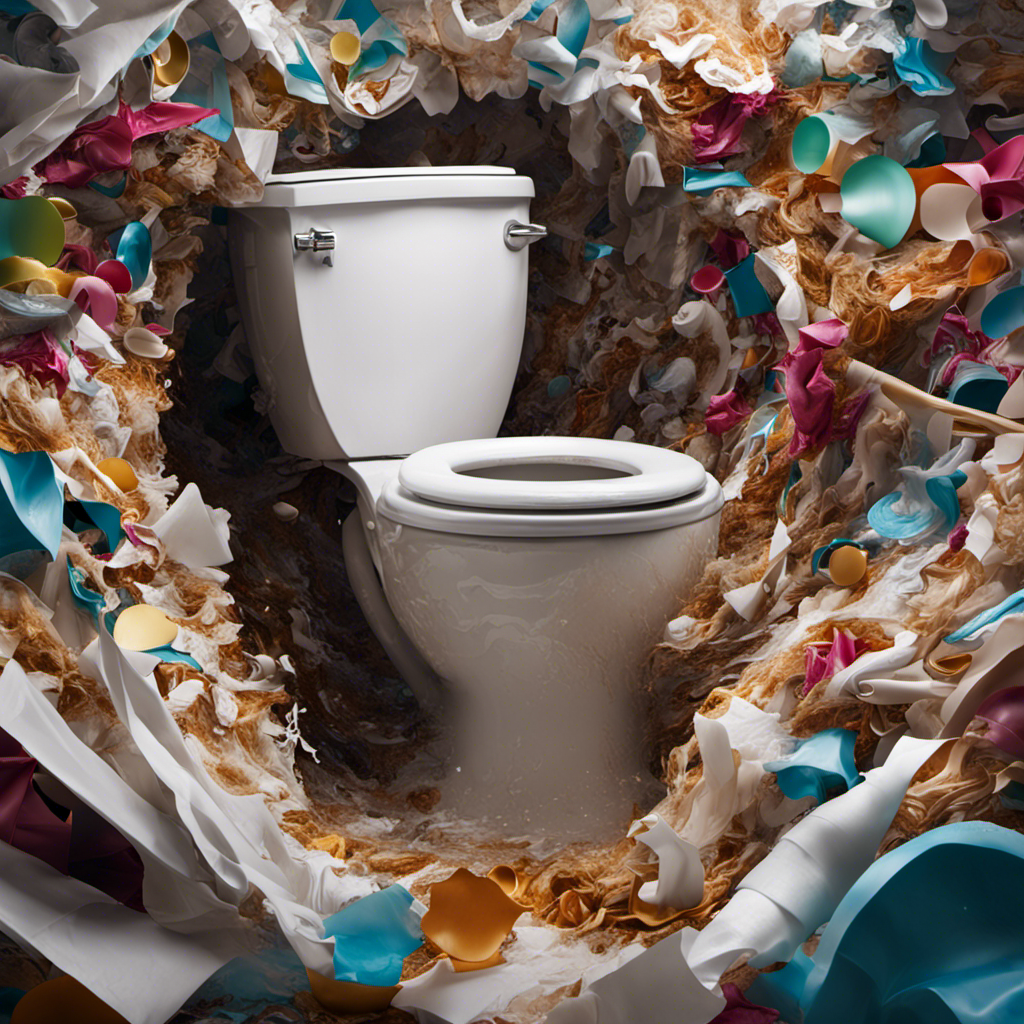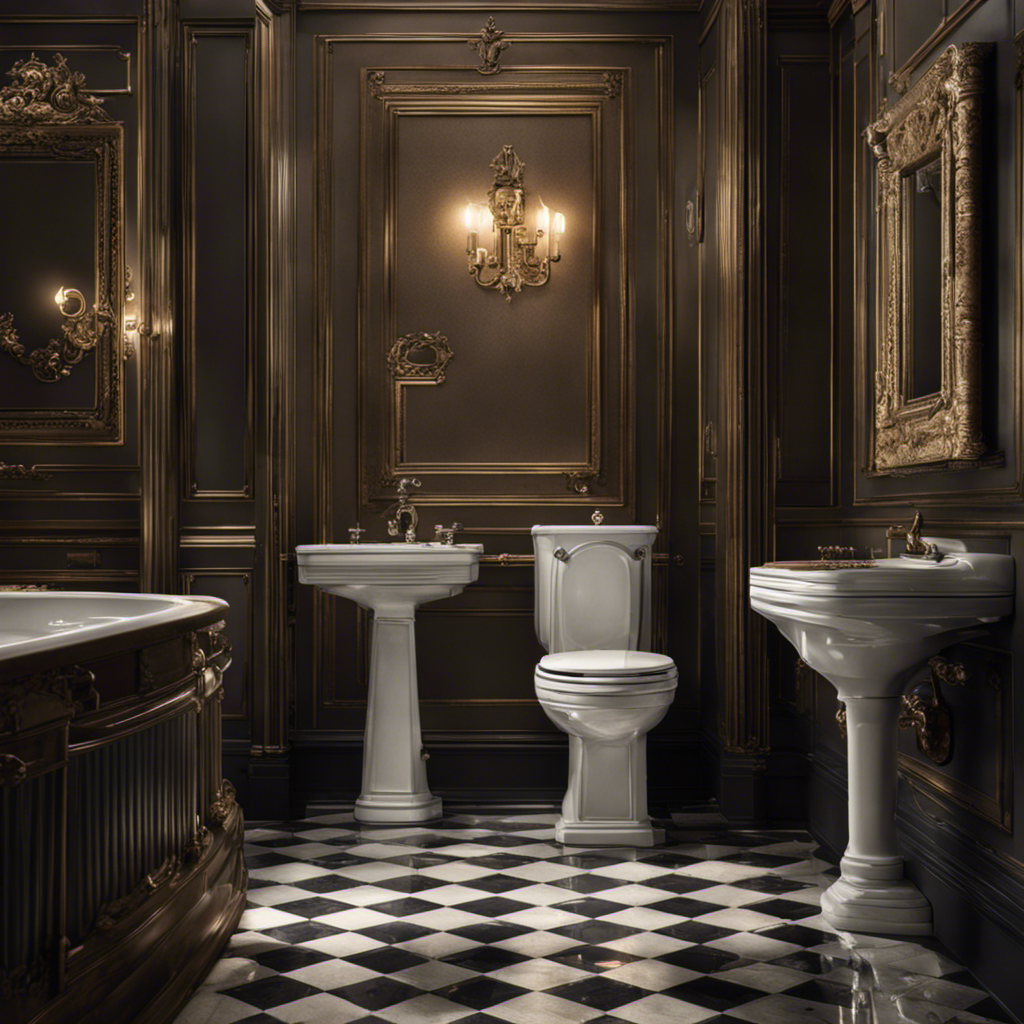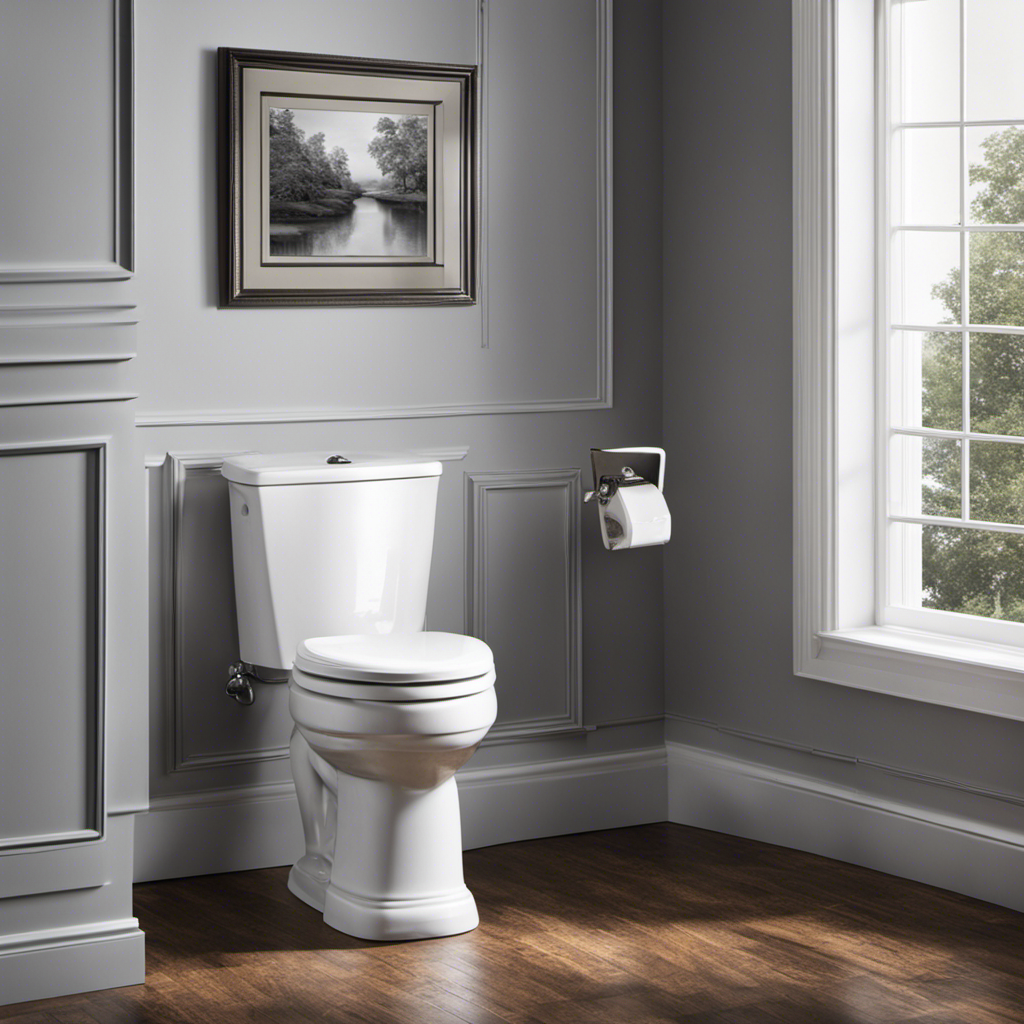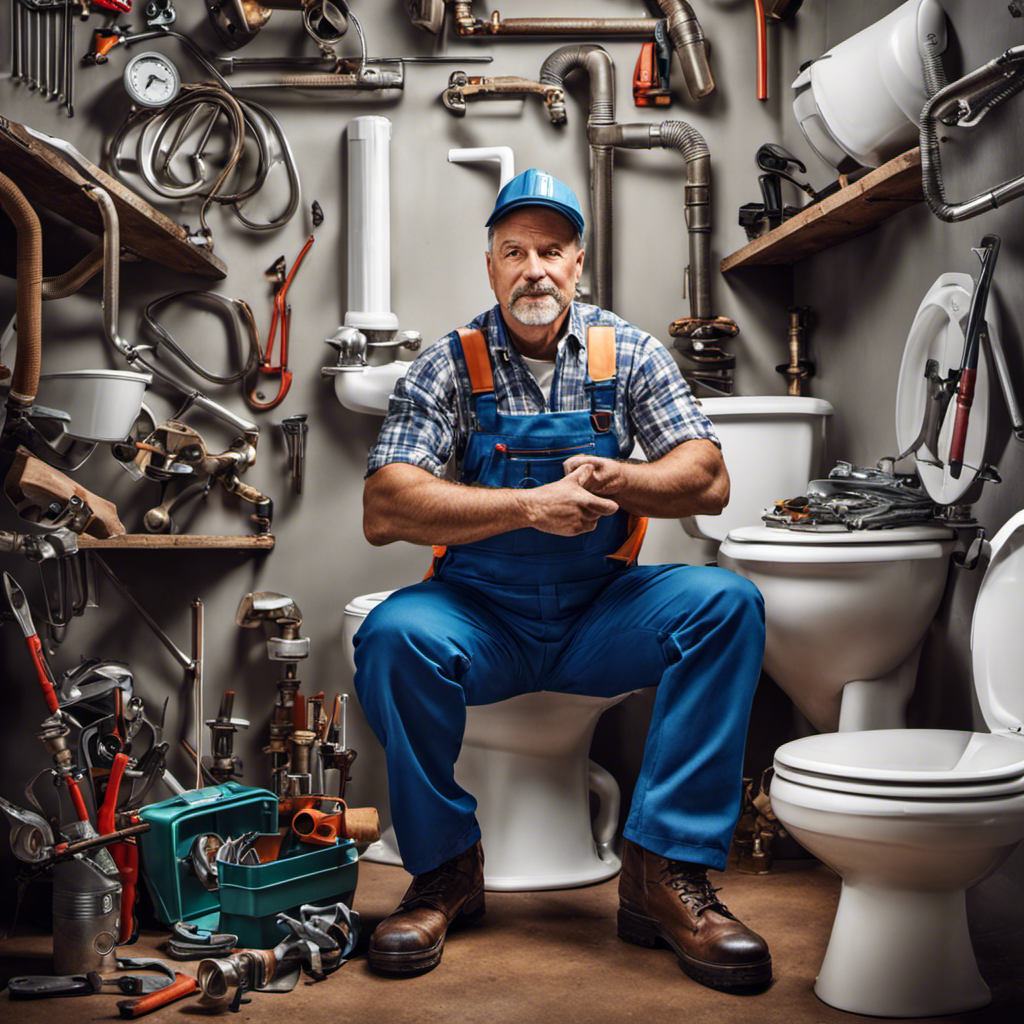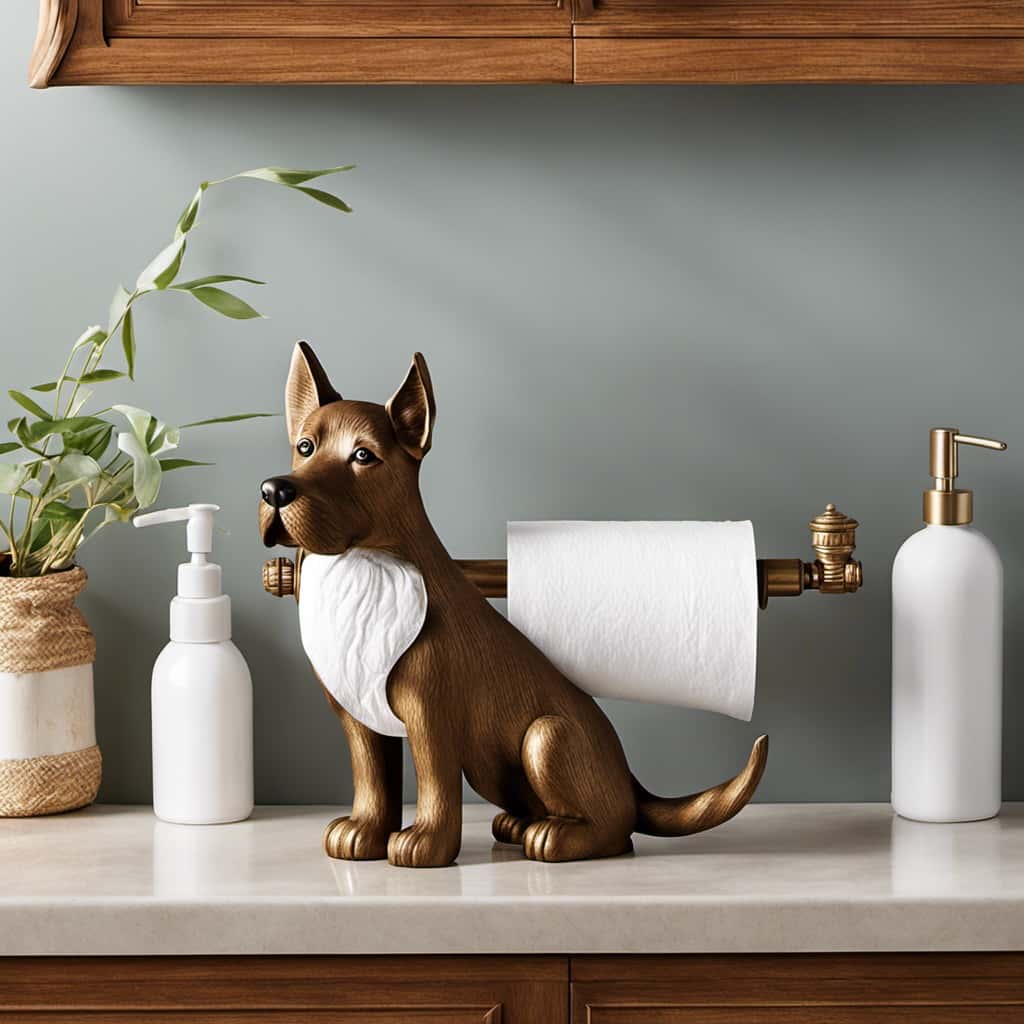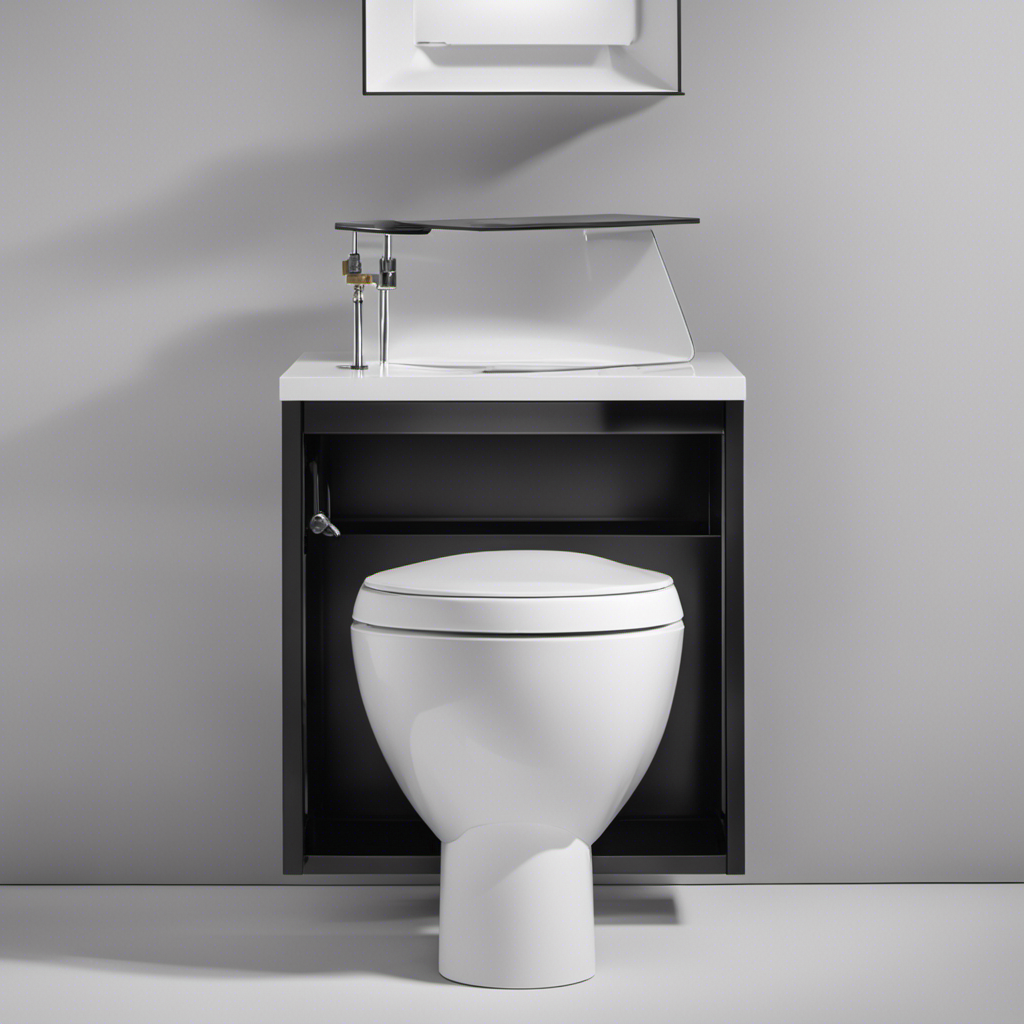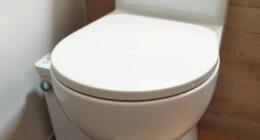As I sit here, pondering the mysteries of the universe, one question keeps swirling in my mind: why does the toilet overflow?
It’s a problem that plagues us all at some point or another. But fear not, for in this article, we will delve into the common causes of toilet overflow, exploring the role of clogs, faulty flapper valves, sewer line blockages, and even water pressure.
So join me on this journey of discovery, as we unravel the secrets of the overflowing throne.
Key Takeaways
- Clogs in the pipes and accumulation of toilet paper and foreign objects are common causes of toilet overflow.
- Faulty flapper valves can lead to continuous water leakage and improper sealing can also cause overflows.
- Sewer line blockages can result in water backing up in the toilet, so regular inspection and cleaning are necessary.
- High water pressure and faulty fill valves can contribute to toilet overflow, so it’s important to check and adjust water pressure if needed.
Common Causes of Toilet Overflow
One of the most common causes of a toilet overflow is a clog in the pipes. When debris such as toilet paper, hair, or foreign objects gets stuck in the pipes, it can block the flow of water and cause it to back up.
To prevent this, regular toilet maintenance is essential. Make sure to avoid flushing items that are not meant to be flushed, such as wet wipes or feminine hygiene products. Additionally, consider using less toilet paper to reduce the risk of clogs.
If you do experience a clog, there are plumbing solutions available. You can try using a plunger or a toilet auger to remove the obstruction. If these methods don’t work, it may be necessary to call a professional plumber for further assistance.
Understanding the Role of Clogs in Toilet Overflow
Understanding the role of clogs can help prevent the toilet from overflowing. Clogs are one of the most common causes of toilet overflow and can occur due to various reasons. One primary cause is the accumulation of toilet paper, which can build up over time and block the flow of water.
Another common culprit is foreign objects, such as sanitary products or excessive amounts of toilet paper, that can get stuck in the pipes and create a blockage.
Regular toilet maintenance is crucial in preventing clogs and subsequent overflow. This includes avoiding flushing non-flushable items and using a plunger or plumbing snake to clear minor clogs.
Additionally, scheduling professional drain cleaning services can help remove stubborn clogs and ensure proper functioning of the toilet.
How Faulty Flapper Valves Contribute to Toilet Overflows
Faulty flapper valves can contribute to toilet overflows by not properly sealing the tank, causing water to continuously leak into the bowl. This is a common issue that can be easily resolved with proper maintenance.
Flapper valves are responsible for controlling the water flow from the tank to the bowl. If they become worn out or damaged, they may not create a tight seal, allowing water to escape. Regularly inspecting and replacing faulty flapper valves is crucial to prevent toilet overflows.
Additionally, it’s important to consider the impact of water level on toilet overflow. If the water level in the tank is set too high, it can increase the likelihood of an overflow. Adjusting the water level to the recommended level can help prevent this issue.
The Impact of Sewer Line Blockages on Toilet Overflow
If you have a sewer line blockage, it can lead to water backing up in your toilet. This is a common issue that homeowners face, and it can be incredibly frustrating and messy. However, there are steps you can take to prevent toilet overflow caused by sewer line blockages.
Here are some practical tips for sewer line maintenance and preventing toilet overflow:
- Regularly inspect and clean your sewer lines to prevent blockages.
- Avoid flushing items that can clog the pipes, such as paper towels, wipes, and feminine hygiene products.
- Consider using a drain strainer to catch debris before it enters the sewer line.
- If you notice any signs of a sewer line blockage, such as slow draining sinks or gurgling sounds in the toilet, call a professional plumber to address the issue promptly.
Exploring the Role of Water Pressure in Toilet Overflow
To prevent water from backing up in your toilet, it’s important to be aware of the role that water pressure plays in this issue. Water pressure refers to the force at which water is delivered to your plumbing system. When the water pressure is too high, it can cause the toilet to overflow. This can happen if there is a blockage in the pipes or if the toilet’s fill valve is faulty. To troubleshoot this issue, you can check the water pressure using a pressure gauge and adjust it if necessary. Additionally, you can inspect the pipes for any blockages and clear them using a plunger or a plumbing snake. Remember, gravity also plays a role in toilet overflow, as water naturally flows downwards. By understanding the role of water pressure and gravity, you can effectively prevent toilet overflow and keep your bathroom functioning properly.
| Role of Water Pressure | Troubleshooting Tips |
|---|---|
| High water pressure can cause toilet overflow | Check water pressure using a gauge |
| Faulty fill valve can lead to overflowing toilet | Adjust water pressure if necessary |
| Gravity plays a role in toilet overflow | Inspect pipes for blockages |
| Blockages in pipes can cause toilet overflow | Clear blockages using a plunger or snake |
| Proper maintenance can prevent toilet overflow | Be mindful of what you flush down the toilet |
Conclusion
In conclusion, understanding the causes of toilet overflow can save you from a messy situation.
Just like a river flowing freely until it encounters a dam, our toilets can experience blockages and valve malfunctions that lead to overflow.
By keeping an eye on potential clogs, checking the flapper valve regularly, and ensuring our sewer lines are clear, we can prevent this unwanted flooding.
Remember, just as a river needs proper water pressure to flow smoothly, so does our toilet.
Stay informed and take practical steps to keep your bathroom a peaceful oasis.
